Warnell Hall, Cumbria: Where sympathy and experimentation go hand in hand
Non Morris is intrigued by the close attention to detail that has produced a new Cumbrian garden of great style and integrity.
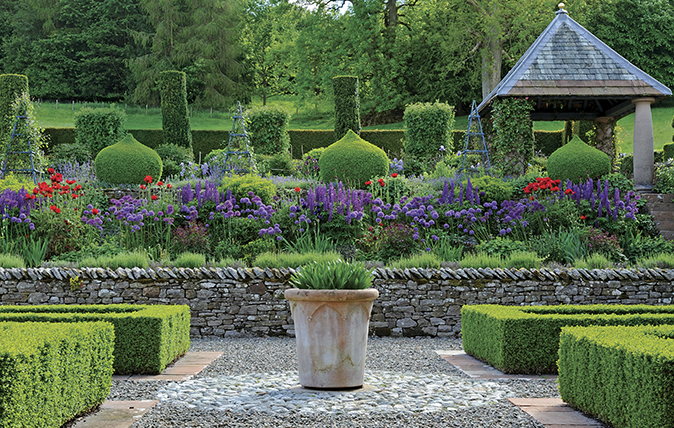

Warnell Hall nestles so comfortably into the sheltering lee of a Cumbrian hillside that, after a short walk into the parkland that surrounds it, the 16th-century pink-sandstone house disappears completely into the fold of the hill. You find yourself in stands of medieval woodland amid individual, wind-swept oaks that are hundreds of years old and stretched out before you are exhilarating views to the Pennines.
Nicholas and Kate Coulson had been searching for a house in Cumbria when Nicholas’s attention was drawn to this lovely, mullion-windowed manor house in an idyllic position not far from the Lake District – a part of the world close to their hearts. Kate had only seen plans and photographs, but suddenly a decision ‘had to be made by lunchtime’ and the couple went with their instinct that the place was too special to ignore.
When the Coulsons arrived at Warnell 17 years ago, they found a house that had been painstakingly restored and the naturally basin-like amphitheatre of a garden had been carefully terraced with dry-stone retaining walls. Softening the house to make it their own felt reasonably straightforward, but the garden was a trickier prospect. Too elaborate in parts and unloved in others, it needed a guiding idea and some expert care to bring it to life and to transform it into the uplifting, serene haven it is today.
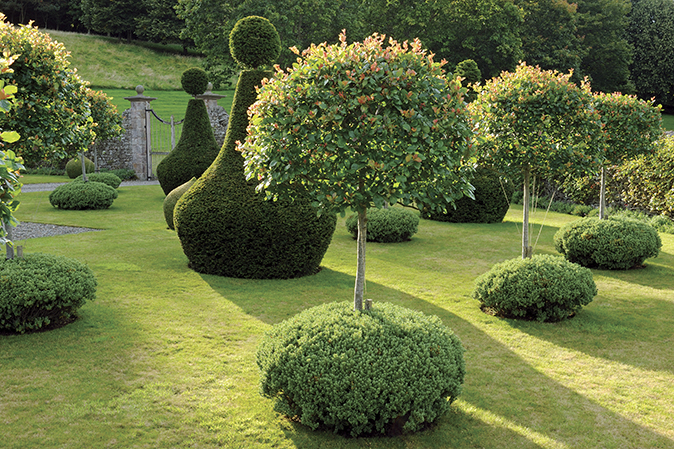
Kate was up for the challenge, but had only gardened in London and felt frustrated by her comparatively limited knowledge of plants and gardens. As she thought about her new garden and appreciated that, as well as the hard landscaping, there were some useful bones of yew and box, she remembered an inspirational visit to a garden designed by Penelope Hobhouse on the Isle of Oronsay.
‘It was a grey day on this treeless island, swept with salt-laden winds, and suddenly you came across these bursts of colour in geometric shapes,’ Kate remembers. Miss Hobhouse had used simple, woven hurdles to enclose blocks of jewel-coloured dahlias: ‘You think it would have looked wrong in this wild place, but it worked… Warnell seems to me quite a wild place, but I was clear from then on that I wanted some strong, clear colours in this garden.’
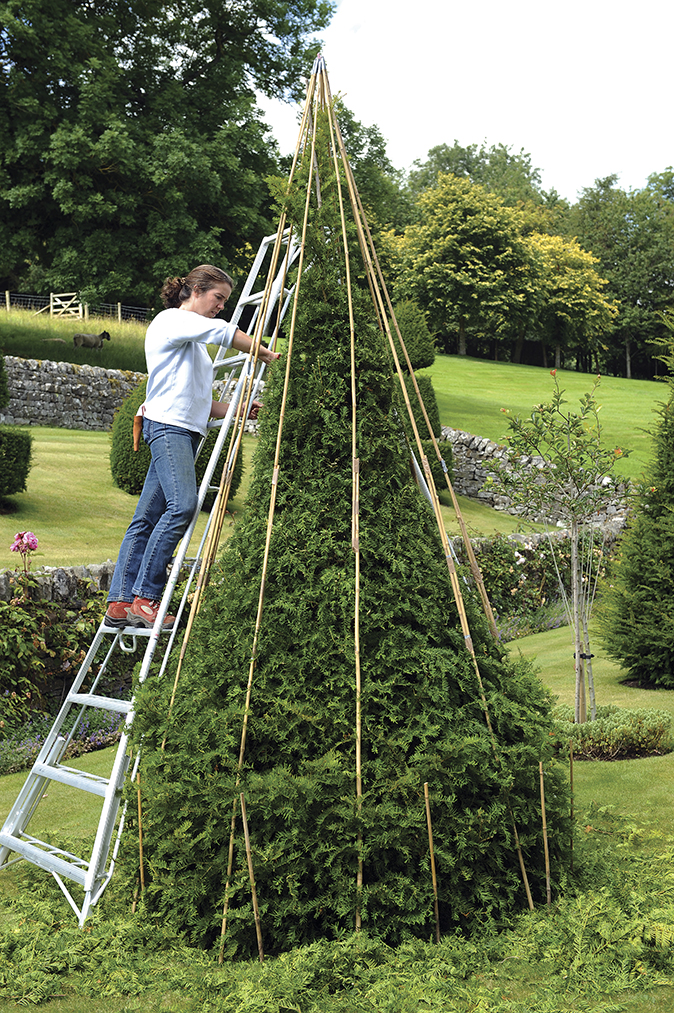
Kate started to visit and look hard at other gardens and to read voraciously. In the main part of the garden, within the south-and west-facing ‘L’ of the house, there are three long, terraced borders rising up from the parterre in which immaculate squares of box are set around an elegant terracotta planter (the pots at Warnell are all sourced from Italian Terrace, both for their durability and for the slightly pink tones in the terracotta that work so well with the stone of the house). She set about developing a planting plan for each of the borders, painstakingly thinking through the different seasons, using separate layers of tracing paper. Her aim was for velvety reds and lime greens at the lower level, blues for the central border and pinks and blues in the border above.
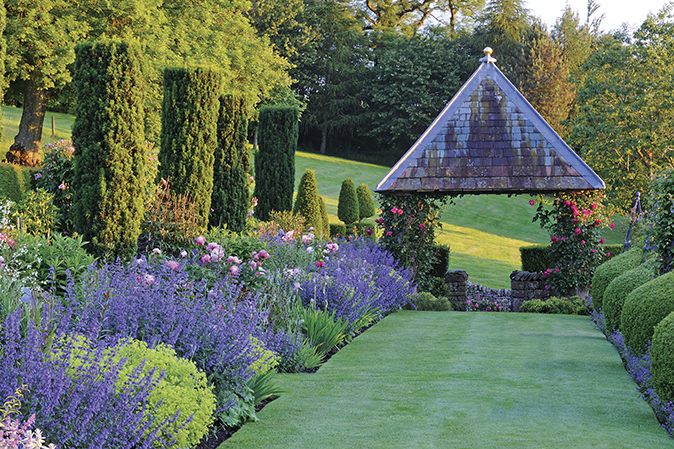
Planting began and improvements were made to the surrounding park – opening up the view to the Pennines and gradually replacing pockets of conifer plantation with native hardwoods. Drainage within the garden made planting in some spots impossible: ‘The soil can become very wet from the numerous springs under the fellside. We have put in masses of drainage, but, if the culvert gets blocked, the water comes down in a torrent and soil and plants get washed away.’
Sign up for the Country Life Newsletter
Exquisite houses, the beauty of Nature, and how to get the most from your life, straight to your inbox.
The sea change came when Kate enrolled on the plantsmanship and garden design courses at the English Gardening School to support her ideas with greater practical knowledge. She also took on two new gardeners: Lyn Brunetti – who had gardened at Levens Hall in the Lake District and Powis Castle in Powys, Wales – and William Mark. The pair were excited and enthusiastic about the chance to collaborate on a serious new garden and from then on things began to fly.
We start our garden tour with the parterre, where Kate is trying out Perovskia atriplicifolia Taiga, a new and low-growing form of Russian sage that she has raised from seed. ‘I love the way it becomes a haze of blue,’ she explains, adding that she uses blue to ‘divide things’ in the garden. Lavender Peter Pan, planted along the lower retaining wall, was painstakingly sourced as the bluest form available from the specialist nursery Downderry and, higher up, the dwarf Nepeta x faassenii and the billowing Nepeta Six Hills Giant provide subtle divisions to the central and top borders.
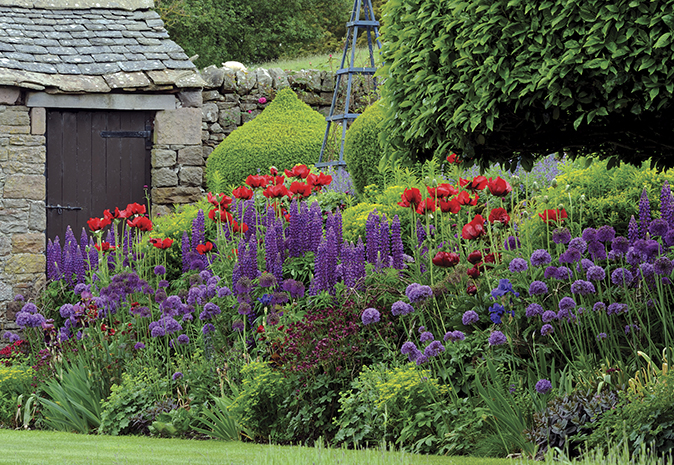
The colours of the Lower Border are gorgeous: the rich mauves of Lupinus Masterpiece and Allium Purple Sensation and Globemaster (Kate will often plant two forms of the same plant to extend the season and add subtle shifts to the palette) are electrified by the bright red of the oriental poppy Beauty of Livermere, the acid green of Euphorbia palustris and the perky mid-green ‘teapot lid’ shapes of box inspired by the onion domes of Brighton Pavilion. It all looks fresh and immaculate, not least because everything, even the Alchemilla mollis, is carefully supported by ‘baskets’ of woven brash from the surrounding beech woods.
Although the palettes of the different borders are distinct, Kate uses certain plants to create a link between them. Her current favourites are the shimmering carmine pink of the single Dahlia coccinea Great Dixter and the slightly deeper red of Gladiolus papilio Ruby – she admires both plants in addition for their elegant form. Stars of the show in the Upper Border are the spectacular columns of the pale-pink highly scented Rosa Ispahan with soldiers of Irish yew and great clouds of white Crambe cordifolia. Kate went to Sissinghurst to find out how to weave rose stems around a framework to create this elegant, sculptural effect.
Two smooth grass paths form walkways between the borders and the Top Walk is enclosed by a clipped yew hedge. Kate has cut a semicircle dip into the outward-facing hedge to frame the fine ash tree in the park beyond perfectly. Looking the other way, there are views through to the yew shapes of the front garden and the cheerful surprise of a south-facing wall, shaggy with self-seeding Euphorbia characias and Erigeron karvinskianus.
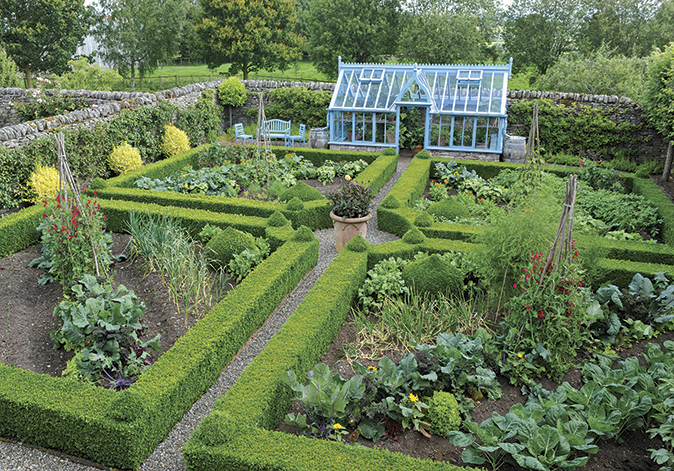
The front garden may seem more formal, but this is, in fact, where things start to hot up. ‘I used to be focused on plants, but now I am focused on trees,’ says Kate, as she introduces me to the rather magical wonderland of perfume-bottle yews and crisp mushrooms of Crataegus persimilis Prunifolia – with plump cushions of grey-green Hebe topiaria at their feet – that populate the lawn. The hawthorn’s lower branches are trained horizontally with strings pegged to the ground and ‘light up the entire space at the end of the season with red fruits as large as crab apples and fiery autumn colour’.
Excited by the possibilities of topiary, she has entered uncharted territory with the 20 yews she is training flat against the outer wall of the garden to soften its rather stark appearance. ‘The branches are to be no thicker than my wrist and will link up with each other in a naturalistic, organic way – like a snail trail’, she enthuses.
Inspiration came from the loggia-clothing Ficus pumila at Villa Balbianello on Lake Como. At the base of each yew is a smart mound of clipped golden oregano that, to her delight, the roe deer do not touch. In the wilder parts of the garden – beyond the damson walk and wildflower meadow that lead down to the beck – she is introducing ‘wild topiary’, shaping hollies and hawthorns to link back to the order of the main garden, and she has created a playful hedge of hawthorn shaping leaders into a series of ‘beehives’.
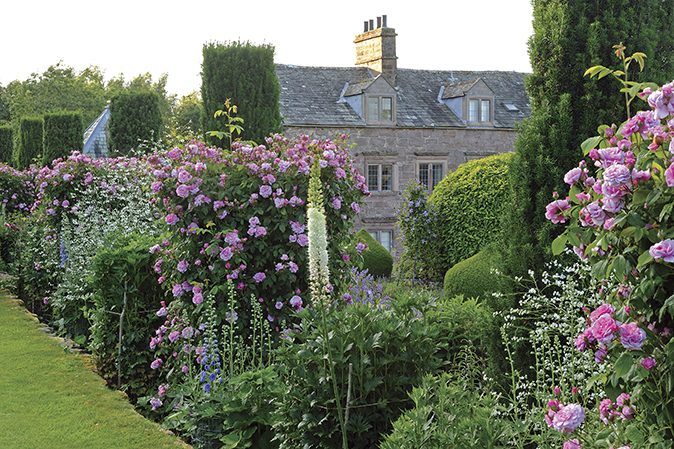
There is inspiring topiary in the kitchen garden, too, where Pyracantha Saphyr Jaune is now quilting the walls with architectural rows of deep green. The yellow berries of the pyracantha echo the warm palette here with plants such as the exhilarating Rudbeckia fulgida Goldsturm and the apricot-orange Dahlia David Howard.
The extraordinary enthusiasm and attention to detail at Warnell Hall leave me smiling from ear to ear. This is a wonderfully thoughtful and comfortable modern country garden that has been nurtured with tireless passion.
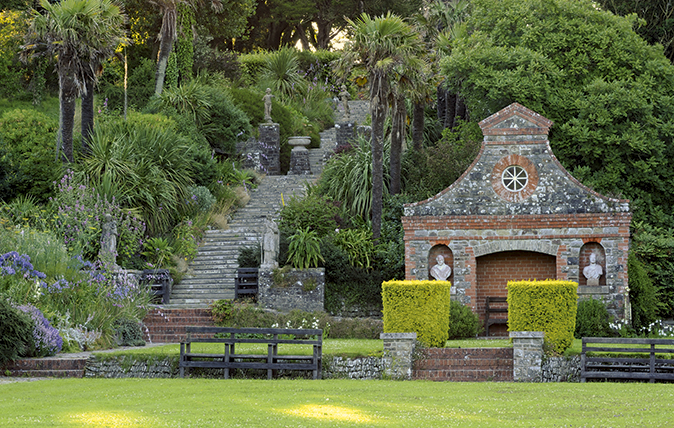
Tapeley Park: A Devonshire garden filled with dramatic flourishes at every turn
Non Morris discovers that experimentation, environmentalism and numerous dramatic flourishes invigorate this unusual Devonshire garden at every turn.
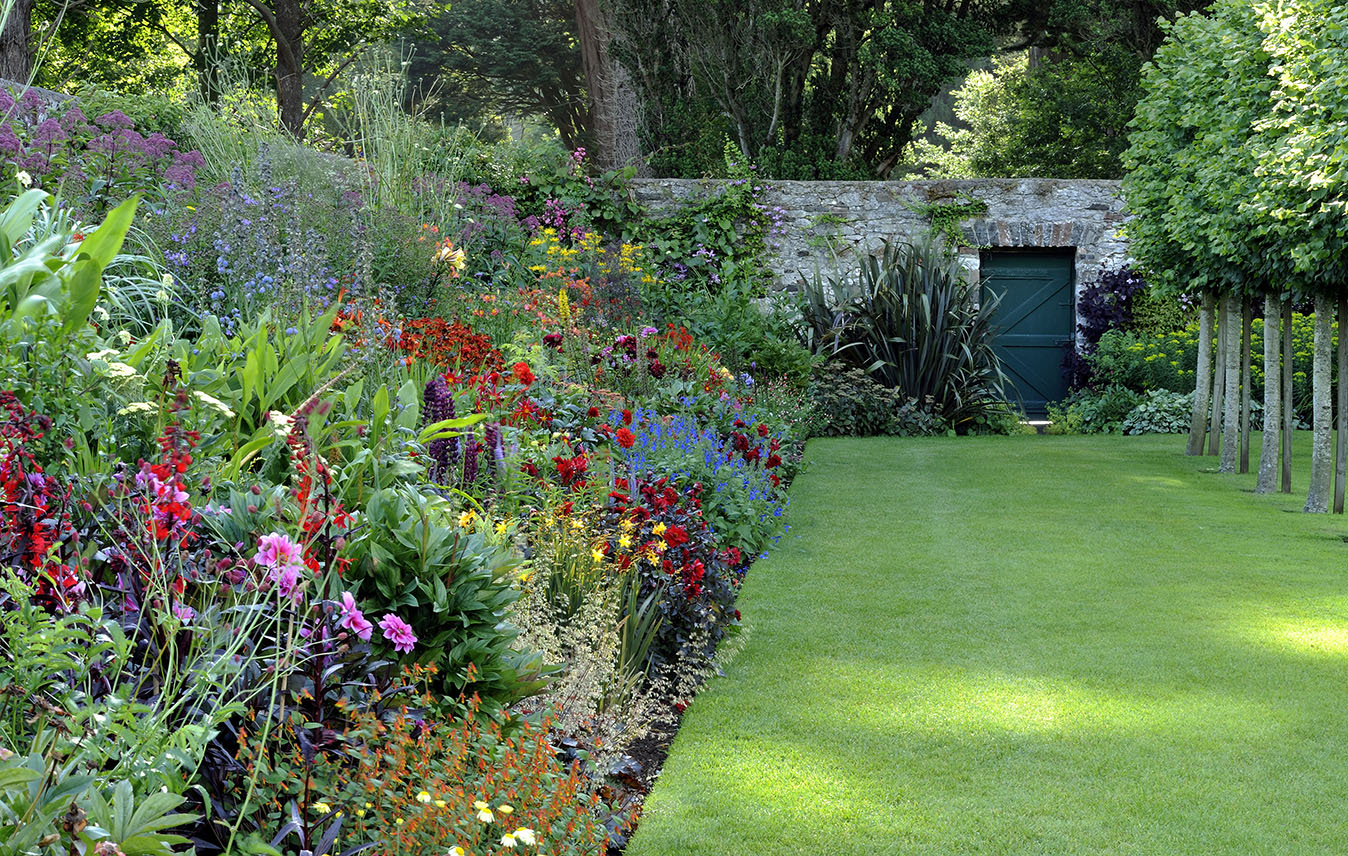
The walled garden at Glenarm Castle, full of surprising, exhilarating and fiery colours
Glenarm Castle's walled garden is a testament to the endless nurturing enthusiasm and creativity of those who care for it,
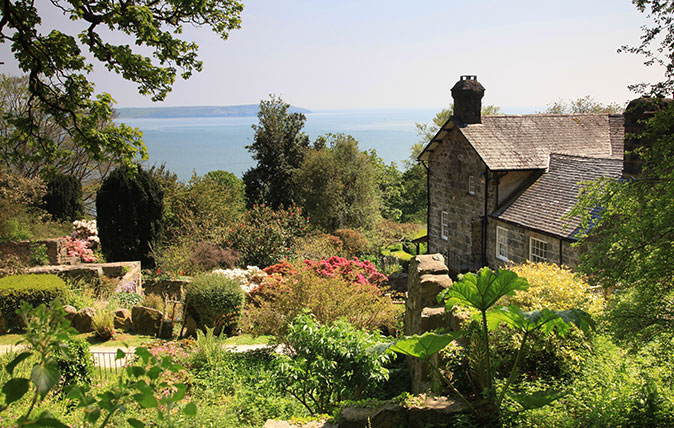
Credit: Plas yn Rhiw - National Trust
Plas yn Rhiw: An intoxicating Welsh garden that time forgot
Non Morris visited one of the most beautiful gardens in Wales, and came away utterly smitten.
Country Life is unlike any other magazine: the only glossy weekly on the newsstand and the only magazine that has been guest-edited by HRH The King not once, but twice. It is a celebration of modern rural life and all its diverse joys and pleasures — that was first published in Queen Victoria's Diamond Jubilee year. Our eclectic mixture of witty and informative content — from the most up-to-date property news and commentary and a coveted glimpse inside some of the UK's best houses and gardens, to gardening, the arts and interior design, written by experts in their field — still cannot be found in print or online, anywhere else.
-
 Two quick and easy seasonal asparagus recipes to try this Easter Weekend
Two quick and easy seasonal asparagus recipes to try this Easter WeekendAsparagus has royal roots — it was once a favourite of Madame de Pompadour.
By Melanie Johnson
-
 Sip tea and laugh at your neighbours in this seaside Norfolk home with a watchtower
Sip tea and laugh at your neighbours in this seaside Norfolk home with a watchtowerOn Cliff Hill in Gorleston, one home is taller than all the others. It could be yours.
By James Fisher